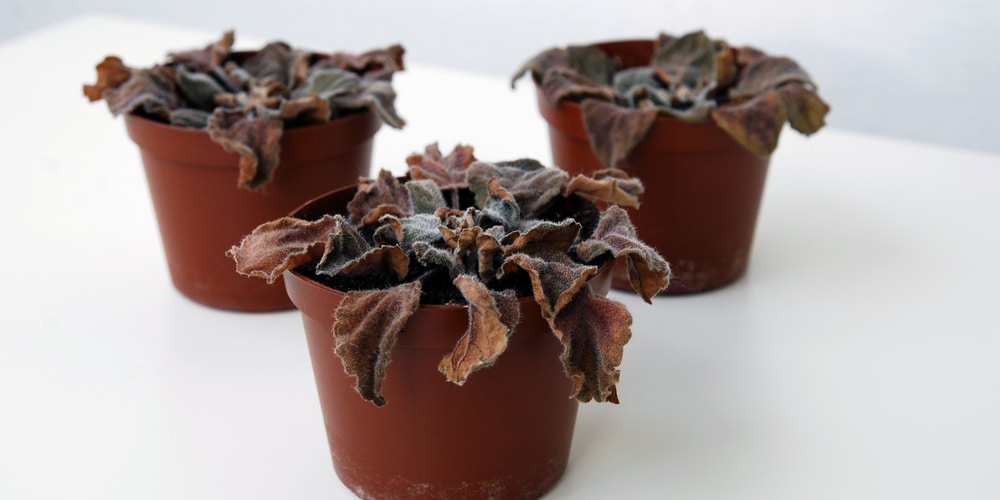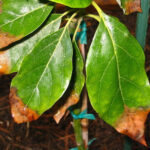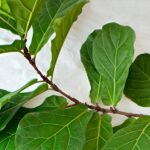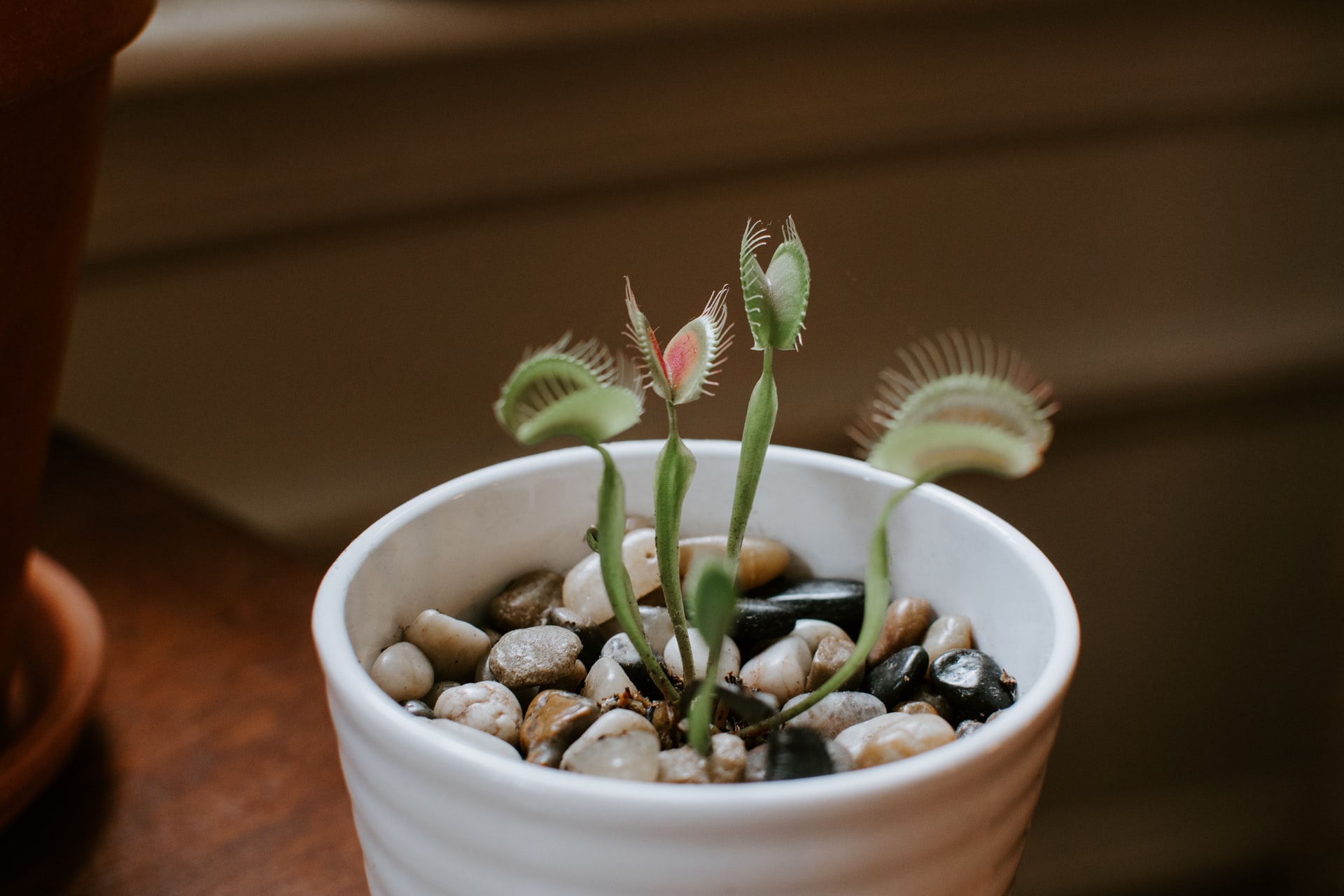If your African violet is wilting, appears burnt, and nearly all of the leaves are yellow with brown spots and all flowers are wilting, it can be very upsetting.
Then you try to alter your care routine, but when your plant still doesn’t perk up after a few days, you begin to wonder: Is my African violet wilting?
Here are some warning symptoms and solutions to help you care for your African violets and keep them from wilting.
Symptoms of African Violet wilting
Wilting Leaves
African Violet wilting leaves usually indicate that your plant is thirsty or that it is suffering from cold temperatures.
If you haven’t watered your African violet in a while, give it a good drink; its leaves should come back to life within 24 hours.
On the other hand, if your African violet is well-watered but still wilting, check to see if it is near an air vent. While some air circulation is beneficial to the plant, African violets do not thrive when placed directly in front of heating or cooling vents.
Burned or dried-out leaf tips
Burnt, dry, or crumbly leaf tips indicate a lack of moisture in your African violet. If you notice your African violet’s leaves turning brown, act quickly because necrosis, an irreversible form of cell damage, can occur.
Lack of moisture is typically caused by general under-watering, dry air, or excessive sunlight. African violets thrive in mossy forests with dense canopies in the wild. They thrive in bright, humid environments (though be sure not to put your plant in direct sunlight).
Brown Spots on Leaves
Leaf scorch, a type of sunburn, is sometimes referred to as brown blotches on African violets. Move your African violet to an area with plenty of indirect sunlight, or arrange a thin curtain between your light source and your plant to help disperse the direct rays, to encourage healing and new development.
Flower Loss or Limp Blooms
Blooms that are healthy in the general signal that your plant is doing well. Damaged, limp, or withered blossoms, on the other hand, indicate that your plant is in difficulty. If the blossoms on your African violet have faded, it’s a sign that your plant needs some extra attention.
Lack of water, too much light, or a nutrient-deficient growing medium are the most common causes of flower loss. Give your African violet flower a nice drink, keep it out of direct sunlight, and begin a fertilizer regimen to keep it healthy.
White Leaves and Flowers
Because African violet leaves are unique, they will have a natural gloss. If your plant develops white, powdery leaves, though, something is amiss.
Mildew, a type of fungal development, is usually found on African violets with powdery leaves. Reduce watering, repot your plant, and use a safe fungicide as a last resort.
Crown and Stem Rot
It’s simple to spot crown and stem rot. If your plant appears sickly in the center or along the stems, it is most certainly suffering from decay and fungus, which causes it to decompose. Because rot normally starts beneath the growth medium and damages roots first, if you find crown rot, your plant is already severely harmed.
Overwatering is the most prevalent cause of crown and stem rot, and it’s also the most typical method rookie gardeners destroy their African violets.
Solutions for Preventing the African Violet wilting
African violets may wilt as the result of under-or overwatering, exposure to low temperatures, or the onset of root rot.
Temperatures
Temperatures should be 65-70 degrees Fahrenheit at night and somewhat warmer during the day. If the temperature is too low, the leaves will droop and curl, and the plant will eventually wilt. Excessive heat might result in thin, spindly growth, dry, wilting leaves, or the plant’s collapse.
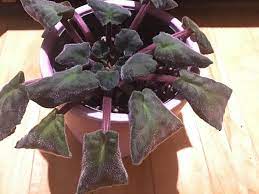
Light
Direct morning or late afternoon sunshine, very strong indirect light, or fluorescent or grow lights are all good for African violets. Avoid direct sunlight during the noon hours, since this might develop brown stains on the leaves. Excessively high light levels can result in extremely compact growth, whereas low light levels lead plants to produce very long leaf stalks and grow erect rather than flat and spherical. Otherwise, the African violets will still wilt. To ensure symmetrical development, rotate plants 1/4 turn once a week (unnecessary if the light source is directly overhead). When growing miniatures, fluorescent and grow lights should be no higher than 18″ above the plant.
Water
When the surface soil is dry to the touch, apply room temperature water. Most violet gardeners like to water from the bottom, however, watering from the top is OK as long as you avoid getting chilly water on the leaves. Before exposing leaves to direct sunlight, ensure sure they are completely dry. Bottom watering is best accomplished with wicking or a “self-watering” pot. If you prefer to place the pot in a saucer of water, remove any water that does not soak into the root ball after 15 to 30 minutes.
humidity
African violets can withstand typical indoor humidity; 40-60% is ideal. If your residence is excessively dry, spritz your violets lightly with room temperature water every day, but never late at night. Place your violets on a tray packed with stones and maintain water in the tray at a level slightly below the surface of the pebbles to counteract dry air.
Fertilizer
Each time you water, use a dilute balanced fertilizer. Most African violets are cultivated in soilless potting mixes and need to be fed on a regular basis. Unless the fertilizer is meant to be used with every watering, make sure to dilute it more than the quantity specified on the label (typically 1/4 strength will be enough). Violets will not blossom well if they are not fed on a regular basis. Too much fertilizer can cause the plant to burn, resulting in brown tips and borders. Most violet fertilizers have a phosphorus (P)-rich formula, which is in the middle of the three numbers on the label (e.g., 15-30-15).
Pests and Disease
Regularly inspect for pests and diseases Powdery mildew, a fungus that appears like fine white talcum powder on leaves and blossoms, is a problem for African violets. This wilting issue might be avoided if there is good air circulation around the plants. Violets are regularly attacked by two insects: mealybug and thrips. Mealybug shows as white, cottony patches on top and bottom leaves, as well as stems. Thrips leave brown margins on flowers, bent foliage, and pollen trails on petals to indicate their presence. Isolate and treat any affected plants as needed. Violets that are properly cared for will grow into healthy plants that are less vulnerable to pests and diseases.
African Violet Propagation
Leaf cuttings are commonly used for African Violet propagation. Cut the stem of a healthy leaf to approximately 1/2 inch and remove it.
Place the stem in a moist cutting mix and keep the humidity up. At the base of the leaf, new plants emerge. Violets may also be produced from seed or by soaking the leaf in water.
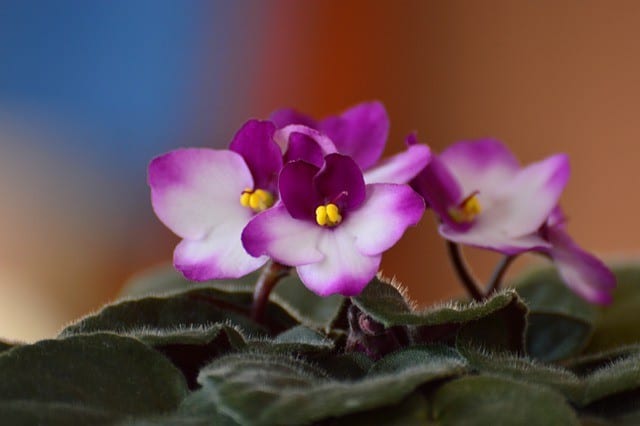
Conclusion
Today, we learned how to keep African violet flowers alive and well by taking the procedures necessary to keep them from wilting.
Check out our other articles on caring for and maintaining indoor plants and gardens before you go. You might also want to save this page as a bookmark for yourself and others who appreciate indoor gardening in the future.

